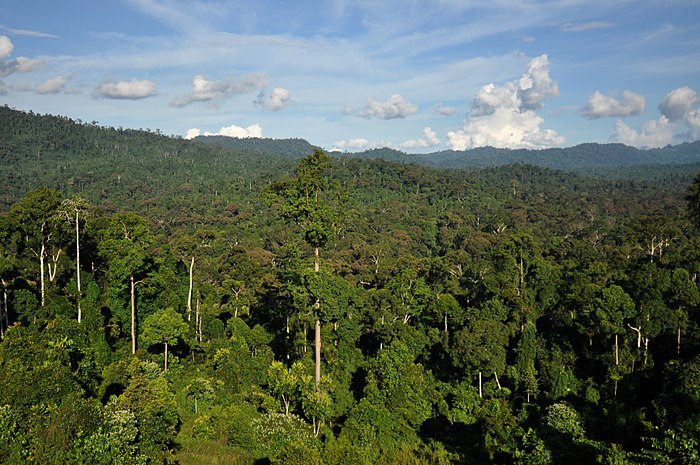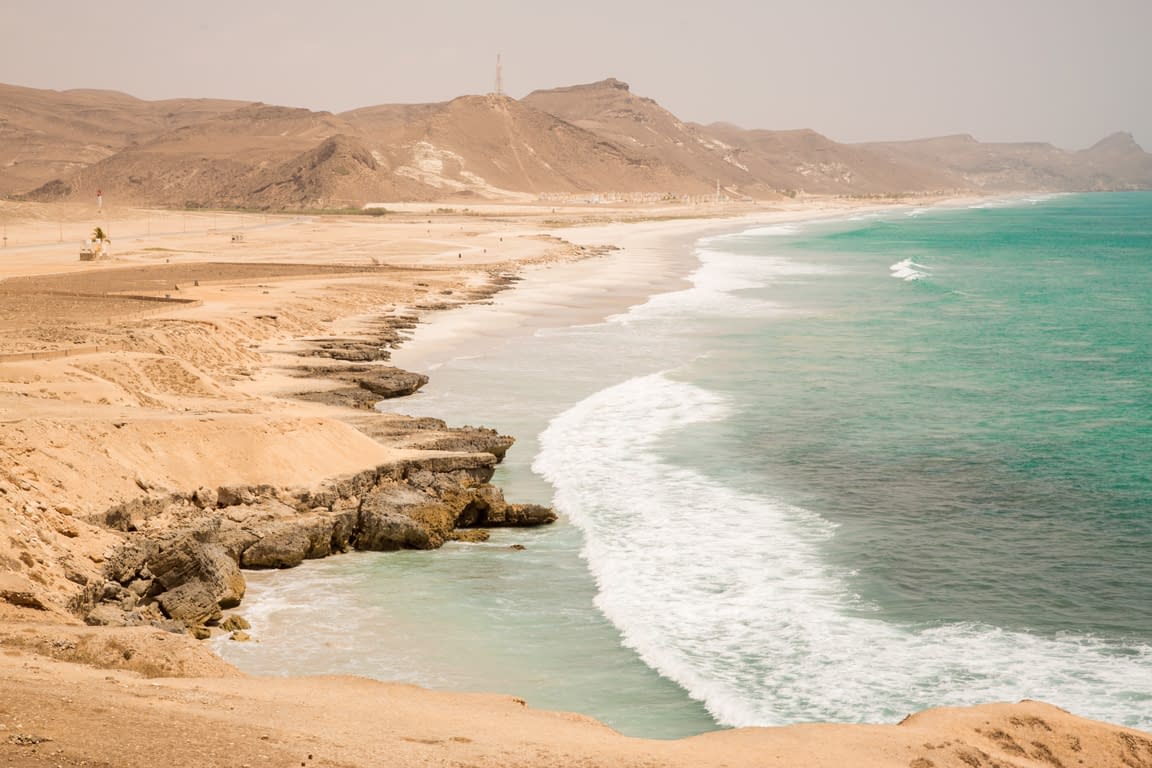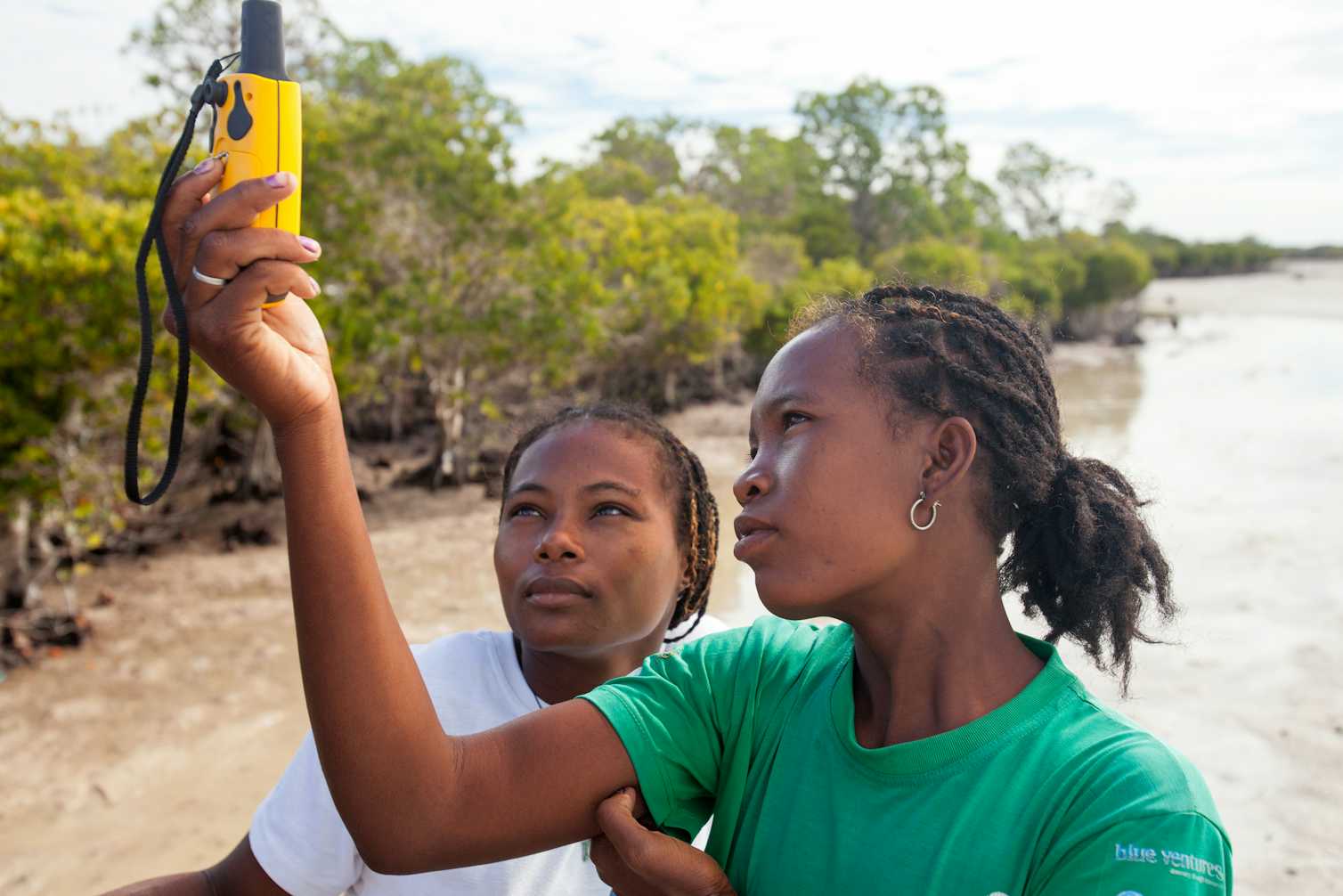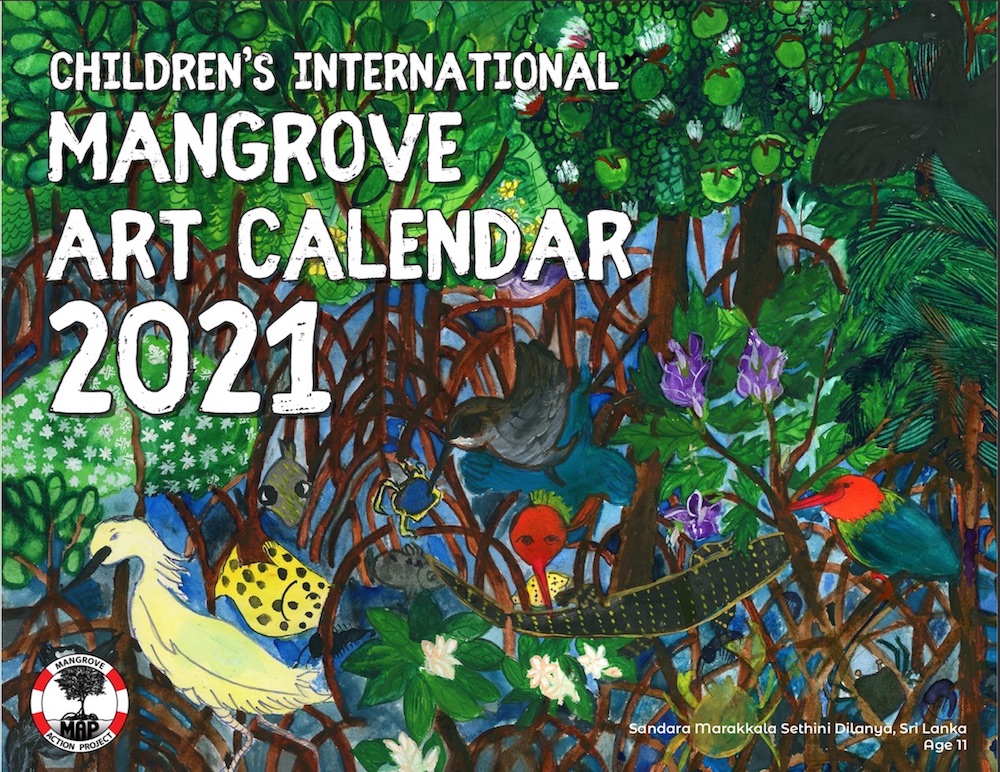2020 Hurricanes Damage Vulnerable Mangroves

GLOBAL – Central America experienced one of its most intense hurricane seasons in 2020. Two major hurricanes and a handful of other late-blooming storms took many lives, displaced hundreds of thousands of people, and caused billions of dollars in economic losses. The storms also left severe scars on the landscape, particularly in some mangrove ecosystems. “Extreme events in the Caribbean are not new, but we are seeing more of them in recent years,” said Rosa Roman-Cuesta, a tropical forest ecologist at Wageningen University (The Netherlands). “We are trying to understand how coastal systems are responding to these events. That’s why studying the effect of the 2020 mega-hurricane season is important.” Roman-Cuesta said the type of hurricane damage has evolved over the years. In years past, she explained, hurricane winds typically caused most of the mangrove damage by uprooting trees, defoliating entire areas, and blocking drainage to the ocean. But in recent years, storms have been rapidly intensifying and stalling more often. The result is extreme precipitation and flooding that affects oxygen concentrations in soils and hinders photosynthesis for mangroves. Large storm surges also physically damage the trees. READ MORE GLOBAL World Wetalnds Day is Feb 2, 2021

“Wetlands and water”, the theme for WWD 2021, shines a spotlight on wetlands as a source of freshwater and encourages actions to restore them and stop their loss. We are facing a growing freshwater crisis that threatens people and our planet. We use more freshwater than nature can replenish, and we are destroying the ecosystem that water and all life depend on most – Wetlands. The 2021 campaign highlights the contribution of wetlands to the quantity and quality of freshwater on our planet. Water and wetlands are connected in an inseparable co-existence that is vital to life, our wellbeing and the health of our planet. READ MORE New science: restoring forests, coastal protection and more

GLOBAL – With extinction rates accelerating around the world, a recent study identified areas where forest restoration could have the most profound impacts on protecting threatened species. Buffeted by human activities that destroy habitats and degrade ecosystems, more than 35,000 species are classified by as “threatened” by the International Union for the Conservation of Nature. Roughly 80 percent of threatened amphibian, bird and mammal species live in forests around the world. “The world’s wildlife is in crisis, biodiversity is declining at an unprecedented rate,” said Conservation International scientist Neil Cox, a co-author on the study. “As the COVID-19 pandemic has shown, our relationship with nature has significant consequences for our ecosystems, economies and well-being. Pinpointing where forest restoration provides the greatest conservation gains for threatened species can help guide our efforts over the next decade.” The study’s authors found that tropical forests — particularly in the Northern Andes Mountains, Central America, the Philippines, Brazil, the Caribbean Islands and eastern central Australia — are priorities for restoring wildlife habitat. READ MORE AMERICAS Coastal Watch launches new mangrove initiative

USA – Coastal Watch reported that mangroves are a vital source of energy, provide nursery habitats for juvenile fish, nesting habitat for wading birds, stabilize shorelines by reducing erosion and are a buffer against storm damage. Many people are familiar with these iconic trees, but few may understand how tightly linked they are to the marine ecosystem in Southwest Florida. This year, Coastal Watch is embarking on a new initiative to teach the value of mangroves on the islands through community involvement. Through the educational initiative, “Back to Our Roots,” it is inviting residents to “adopt” their own mangrove to nurture so it can be planted at a mangrove restoration site on Sanibel or Captiva. READ MORE ASIA Indonesia renews peat restoration bid to include mangroves, but hurdles abound

INDONESIA – An Indonesian government initiative that fell short of its goal to rehabilitate degraded peat forests will get another chance to do so — plus the added task of rehabilitating mangrove habitats. Indonesian President Joko Widodo extended the mandate of the Peatland Restoration Agency (BRG) through to 2024, after it expired at the end of 2020. He had established the agency in 2016 in the wake of widespread peatland fires the previous year, and tasked it with restoring more than 2.6 million hectares (6.4 million acres) of degraded peatlands — an area nearly three times the size of Puerto Rico — to prevent future fires. The 2.6 million hectares target consists of 900,000 hectares (2.2 million acres) of peat outside concessions and 1.7 million hectares (4.2 million acres) inside concessions. By the end of 2020, however, the BRG had managed to restore 835,288 hectares (2.06 million acres) of peatland outside concession areas, or 94% of its target. READ MORE Tigers stalk as storms, poverty force Indians deep into mangrove forests

INDIA – On a warm November afternoon, Parul Haldar balanced precariously on the bow of a small wooden dinghy, pulling in a long net flecked with fish from the swirling brown river.Just behind her loomed the dense forest of the Sundarbans, where some 10,000 square km of tidal mangroves straddle India’s northeastern coastline and western Bangladesh and open into the Bay of Bengal. Four years ago, her husband disappeared on a fishing trip deep inside the forest. Two fishermen with him saw his body being dragged into the undergrowth – one of a rising number of humans killed by tigers as they venture into the wild. That Haldar, a single mother of four, is taking such risks is testament to growing economic and ecological pressures on more than 14 million people living on the Indian and Bangladeshi sides of the low-lying Sundarbans. They have led to a reduced dependence on agriculture, a rising number of migrant workers and, for those like Haldar who can’t leave the delta to work elsewhere, a reliance on the forests and rivers to survive. READ MORE Climate change caused mangrove collapse in Oman 6,000 years ago

OMAN – Most of the mangrove forests on the coasts of Oman disappeared about 6,000 years ago. Until now, the reason for this was not entirely clear. A current study of the University of Bonn (Germany) now sheds light on this: It indicates that the collapse of coastal ecosystems was caused by climatic changes. In contrast, falling sea level or overuse by humans are not likely to be the reasons. The speed of the mangrove extinction was dramatic: Many of the stocks were irreversibly lost within a few decades. The results are published in the journal Quaternary Research. Fossil finds prove that there used to be many mangrove lagoons on the coast of Oman. However, some 6,000 years ago these suddenly largely vanished – the reasons for this were previously disputed. Over the past few years, Decker traveled several times to the easternmost country of the Arabian Peninsula to pursue this question for her doctoral thesis. With the support of her doctoral supervisor Prof. Gösta Hoffmann, she compiled numerous geochemical, sedimentological and archaeological findings into an overall picture. “From our point of view, everything suggests that the collapse of these ecosystems has climatic reasons,” she says. READ MORE New mangrove forest mapping tool puts conservation in reach of coastal communities

MYANMAR – Despite their obvious value, aquaculture, agriculture, urban development and unmanaged harvest are converting mangrove ecosystems across much of the tropics. Approximately 35 per cent of global mangrove cover was lost in the 1980s and ‘90s. While the rate of loss slowed in the past two decades — to an estimated four per cent between 1996 and 2016 — many regions remain hotspots for mangrove loss, including Myanmar. My colleagues and I use satellite imagery and field measurements to study mangrove ecosystems in several countries. We’ve developed an accessible and intuitive tool that provides coastal managers with the accurate, reliable, up-to-date and locally relevant information they need for effective community-based conservation of these critical blue (marine) forests. Until now, information from satellite imagery on mangrove extent and change was either global in coverage and not intended for the smaller areas typically covered by community-based conservation efforts, or — if focused on a local scale — required substantial and costly technical expertise. READ MORE Alarm raised over systematic destruction of mangroves in Maharashtra

INDIA – Activists allege that they have made several complaints to all the concerned authorities, who sadly appear to be unconcerned. Environmentalists have raised concerns over the massive destruction of mangroves at Ulwe and Kharghar in Raigad district and Vashi in Thane district of Maharashtra. They have appealed to the Bombay high court appointed mangrove protection and conservation committee to intervene before the sea forests vanish. The development comes before the mangroves’ land gets transferred to the forest department. Navi Mumbai based environment protection organisation NatConnect Foundation alleged that the attempt to destroy the mangroves’ land appears to be systemic. “This appears to be a methodical, systematic conspiracy by the land grabbers to destroy the mangroves, dry up the area before the forest department steps in,” said B N Kumar, director of NatConnect Foundation. READ MORE More mangroves planted at Iloilo River

PHILIPPINES – EMPLOYEES and agency personnel of SM City Iloilo planted the first batch of mangroves at riverbank near Esplanade 9 on January 13. Several batches of staff will be deployed on specific days to complete the target of 2,000 mangroves at the site. Mayor Jerry Treñas thanked partners for helping implement initiatives for environmental preservation. The activity was part of the massive mangrove planting activities of City Government, set to spruce up banks of Iloilo River particularly along new sections of Esplanades. The mall, headed by SM Regional Operations Manager for Visayas 3 Girlie Liboon, responded to the call of collective efforts in conserving the waterway at the heart of the city. READ MORE OCEANA Rising sea levels transform coastal region around Kakadu National Park

AUSTRALIA – Floodplains around Australia’s largest national park are undergoing a visible transformation as rising sea levels push saltwater further from the coast into its freshwater river systems. Climate change is understood to be driving the phenomenon along the coastal region around Kakadu National Park in the Northern Territory, which will likely have dramatic consequences in the coming century. If emissions continue to rise, modelling by the CSIRO from 2017 shows almost half of Kakadu’s freshwater wetlands could be inundated with saltwater within 50 years, spelling out drastic repercussions for biodiversity. Due to a process that began decades ago, evidence of saltwater inundation is plain to see in areas of the park and beyond, where mangroves — shrubs that thrives in brackish water — have taken over as far as the eye can see. READ MORE Call for urgent action to prevent further dieback of Adelaide’s St Kilda mangroves

AUSTRALIA – About 10 hectares of mangrove forest adjacent to the St Kilda Mangrove Trail died within two months last year, along with 35 hectares of salt marsh, and the gardens of about half a dozen houses. Nearby brine ponds, mined for salt by company Buckland Dry Creek, are believed to be leaking hypersaline water into the mangrove ecosystem — threatening not only their existence, but that of several fish and migratory bird species. Environmental consultant Peri Coleman is calling for excess brine in the ponds to be pumped out immediately before it solidified and could not be moved. Ms Coleman said she believed the dieback was caused by the refilling of gypsum ponds with hypersaline brine at the nearby Dry Creek salt field, about 20 kilometres north of Adelaide’s CBD. She said the ponds had been empty since 2014, causing their gypsum lining to dry out and crack. “Once the brine was filled back up into those ponds, it immediately started to seep out and took the acid and the hypersaline brine with it into the mangroves and salt marsh area,” she said. READ MORE FEATURED SITE This decade, we can rewrite the future.

VIEW SITE Like this newsletter?
Pease consider donating to MAP to keep it going.
Giving could never be easier  | BUY YOURS!

ACTION ALERTS Tell the Japan International Cooperation Agency not to fund polluting coal – TAKE ACTION Stop the destruction of Can Gio Mangrove Biosphere Reserve
SIGN PETITION (Scroll down in linked page for English version) Please SIGN: keep plantations out of orangutan habitat!
TAKE ACTIONUnilever: stop destroying mangroves for convenience food! SIGN OUR PETITION
Stop plundering the oceans for industrial aquaculture! SIGN THE PETITION
Like this newsletter? Pease consider donating to MAP to keep it going. Giving could never be easier
Please see our newest video: “Restoring The Natural Mangrove Forest”
WATCH VIDEO 
Restoring The Natural Mangrove Forest
Watch movie 
Community Based Ecological Mangrove Restoration in Rufiji Delta VIEW VIDEO Video: Mangroves for the Future – A look bacK. As the latest phase of Mangroves for the Future (MFF) draws to a close, this video highlights some of the project’s most successful initiatives – from local women supporting national park management in Viet Nam to an island in the Maldives that has become a model for waste management, and everything in between. View Here WANT TO GET INVOLVED?
Follow and Join MAP!    
Like this newsletter? Pease consider donating to MAP to keep it going. Giving could never be easier 

Singing for the Sundarbans WATCH HERE Entrevista con Monica Quarto del Mangrove Action Project (Spanish language) Oye Aqui
VOLUNTEER OPPORTUNITY 
MANGROVE ISSUES Want to learn more about mangroves?
Our short presentation will give you a better understanding of the issues we are working to solve. WATCH PRESENTATION What is CBEMR? Download MAP’s 2 page CBEMR Information Sheet containing links to all MAP’s CBEMR resources – CLICK HERE
View MAP’s uploaded Videos at
MAP Video Gallery Question Your Shrimp Consumer/Markets Campaign!
WATCH VIDEO Mangroves: Guidebook to Malaysia – Click Here SHARE MAP’S VISION
CLICK HERE to watch short introductory video. Together we can work “at the roots of the sea”. Our short documentary, Reducing the Risk of Disaster through Nature-Based Solutions : Mangroves

Marvellous Mangroves Curriculum The Marvellous Mangroves Curriculum begins with a simple philosophy – getting future generations to not only learn about, but understand the importance of mangrove forests. VISIT 
The award-winning Marvellous Mangroves (MM) curriculum educates children on the importance of mangroves and their ecological functions, teaching them about modern challenges and mechanisms for sustainability. VIEW VIDEO Marvellous Mangroves Curriculum in Bangladesh – WATCH VIDEO
MARVELLOUS MANGROVES IN BRAZIL
En Portuges 
Marvellous Mangroves – A Curriculum-Based Teachers Guide.
Like this newsletter? Pease consider donating to MAP to keep it going. Giving could never be easier 
“Question Your Shrimp” Campaign Question Your Shrimp – is it really sustainable? Sign the Petition
Note to Our Readers: We strive to keep active links in our newsletter. However, due to circumstances beyond our control, occasionally links to stories may become broken. If you find a link to a story is not functioning, please cut and paste the headline into your browser search bar. In most cases you should be able to locate the original story.
Not yet a MAP News subscriber?
Click here to subscribe. 
|




























